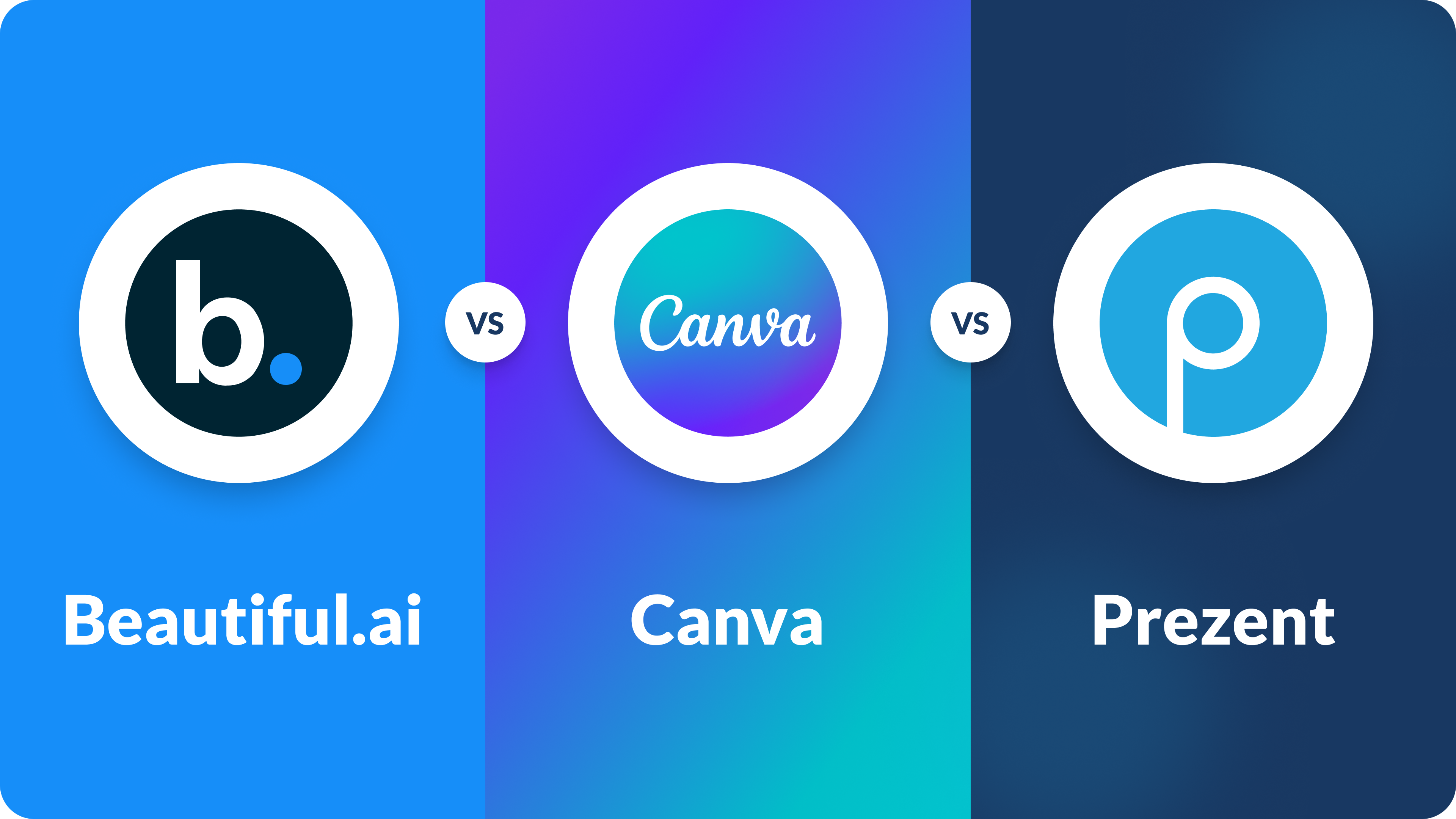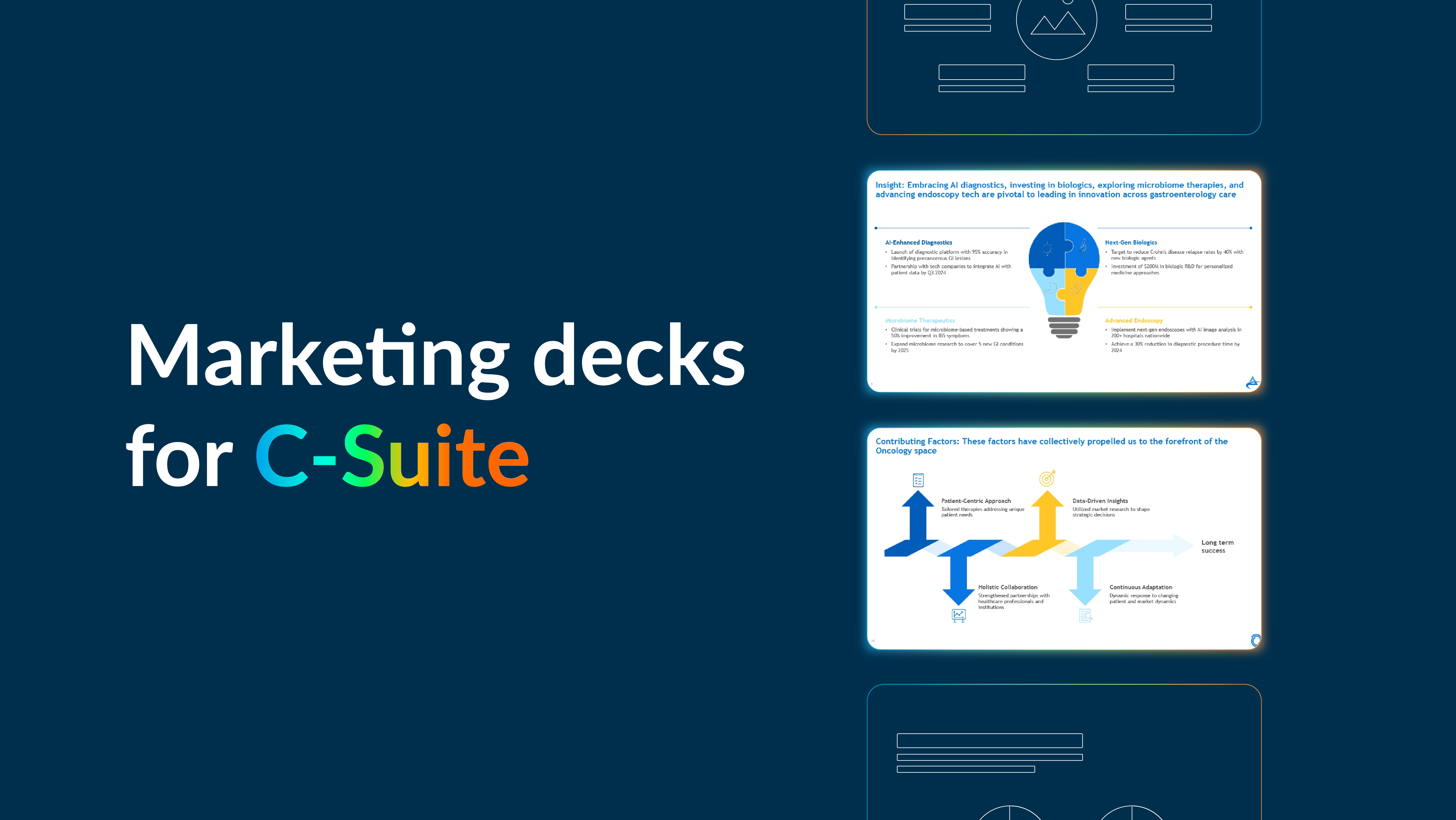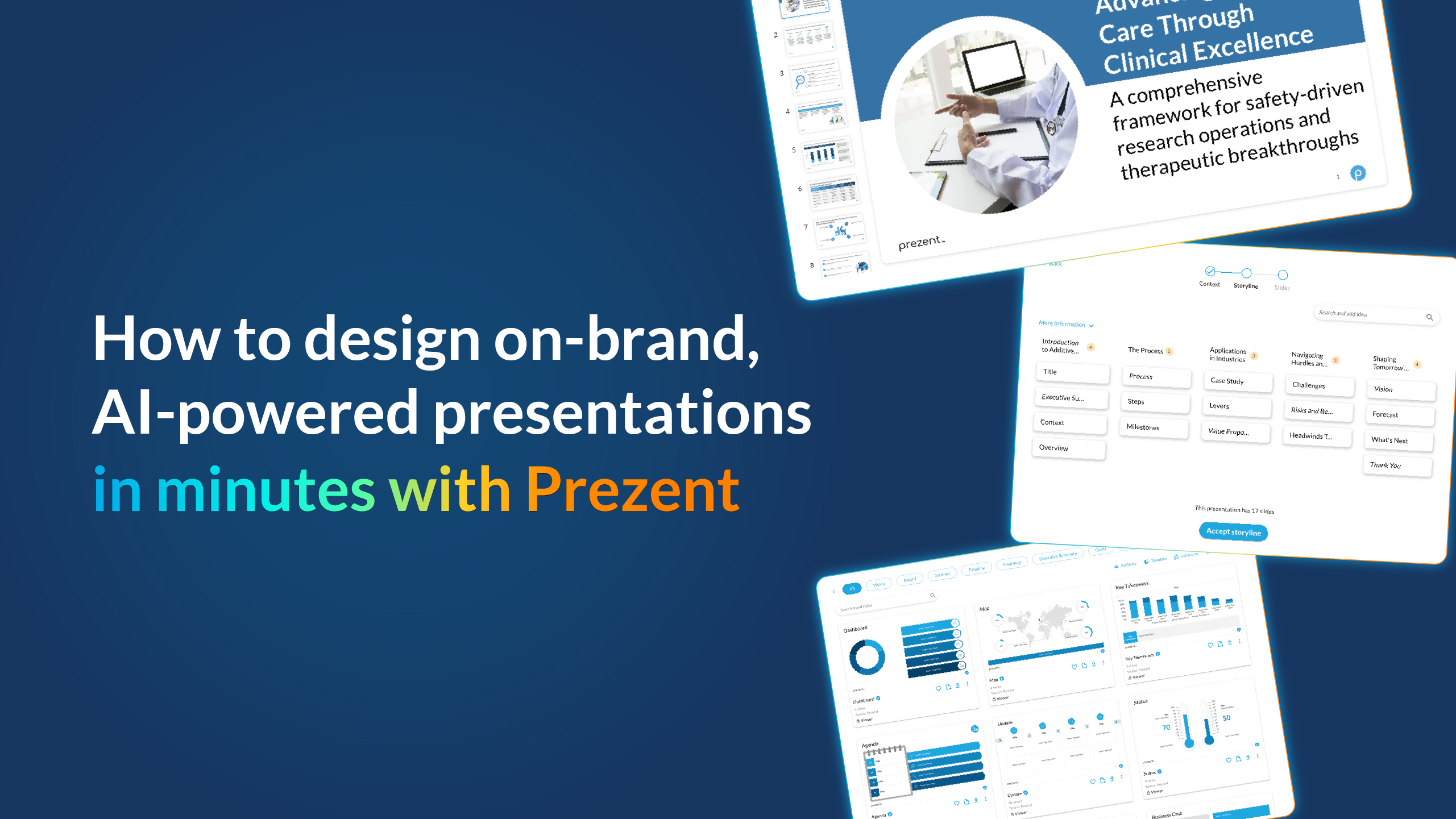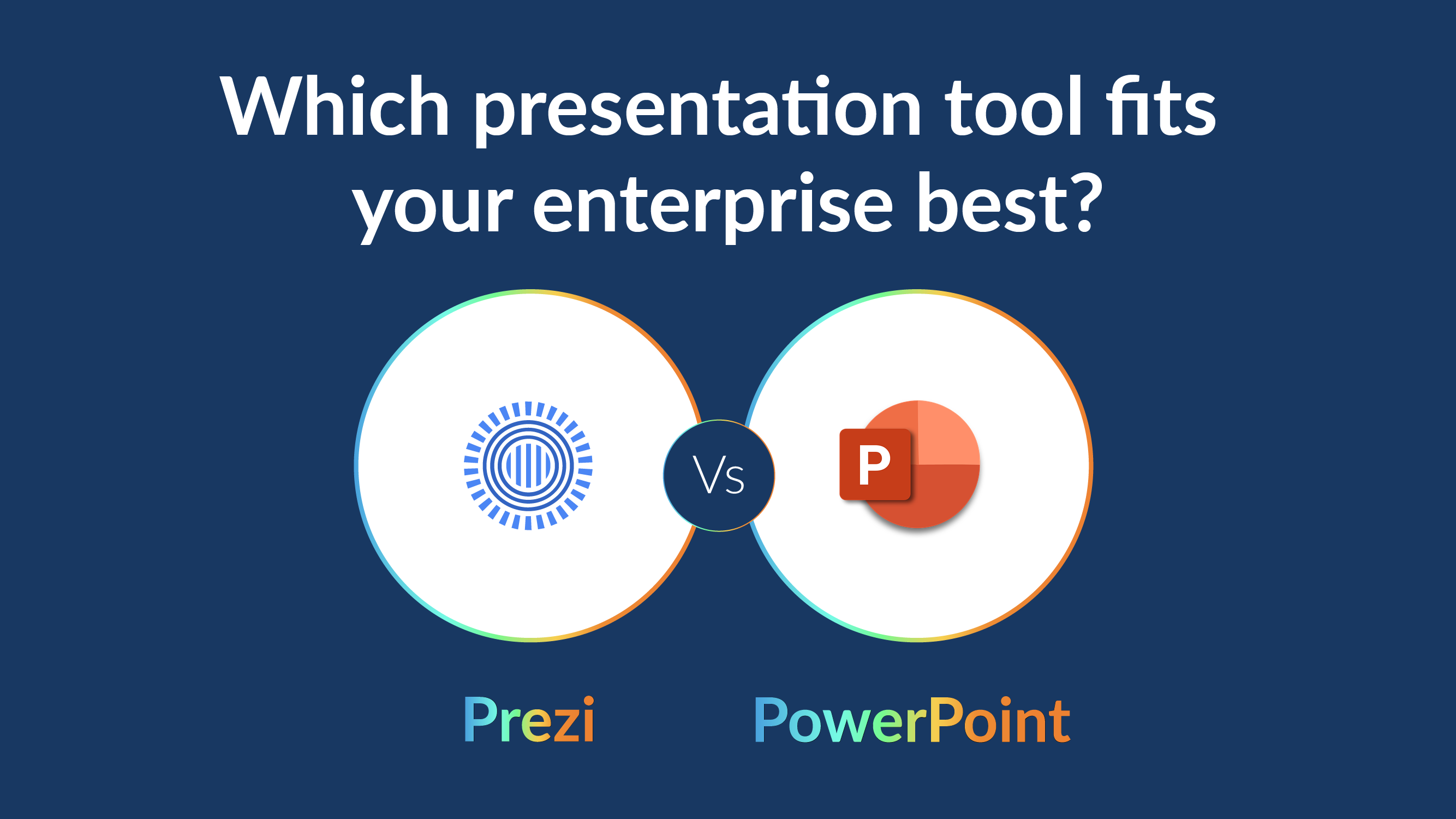Clinical trial background and update presentation: The all-in-one guide

Hey there!
Welcome to the world of medical research and innovation, the ability to convey complex information clearly and effectively is paramount.
Clinical trials, at the heart of medical advancements, require meticulous presentation to communicate their significance and findings accurately.
What are clinical trials?
Clinical trials are meticulously designed studies that aim to assess the effectiveness and safety of medical treatments, drugs, or procedures. These trials are an indispensable part of the medical research process, guiding us towards breakthroughs in healthcare.
Clinical trial phases
Before diving into the intricacies of creating an outstanding clinical trial presentation, it's crucial to understand the phases of clinical trials.
- Pre-clinical phase: This initial phase involves laboratory testing and research on animals. The focus here is on the safety and efficacy of potential treatments.
- Phase I: The first human testing phase, primarily evaluating safety and dosage.
- Phase II: Expanding the scope, this phase explores the treatment's effectiveness and side effects.
- Phase III: Large-scale trials to confirm efficacy and monitor side effects.
- Phase IV: Post-approval monitoring to ensure ongoing safety and efficacy.
What are the advantages of clinical trials presentation?
Clinical trial presentations are not just about data and statistics; they are a crucial tool for disseminating information effectively. Here are some key advantages:
- Clear communication: A well-structured presentation simplifies complex data, making it accessible to various stakeholders.
- Transparency: Presentations foster trust by openly sharing research methodologies, results, and potential risks.
- Impactful decisions: Stakeholders can make informed decisions based on presentation insights.
- Continual improvement: Feedback from presentations aids in refining research methodologies and treatments.
Now that we've established the importance of clinical trial presentations, let's explore how to structure an effective one.
Here is a guide to clinical trial investment decision presentation
How to structure an effective clinical trial background and update presentation
An effective clinical trial background and update presentation should be well-organized, informative, and tailored to your audience. To ensure your message resonates and your presentation captivates, follow this structured approach:
Introduction
Begin your presentation with a compelling introduction that sets the stage for what's to come. Start with a brief overview of the clinical trial, including its purpose, design, and current status.
Introduce the key topics that you will be covering in your presentation, such as:
- Background of the disease: Provide a comprehensive overview of the disease or condition being studied. Discuss its prevalence, incidence, and risk factors.
- Standard of care: Examine the current standard of care treatment and its limitations. Highlight the gaps or shortcomings that the clinical trial aims to address.
- Rationale for the trial: Explain why the clinical trial is necessary. What are the driving factors behind the development of a new treatment? What do researchers hope to achieve and learn?
Background
Dive deeper into the background of the disease or condition.
- Discuss its prevalence, emphasizing the scope of the problem in the population.
- Explore its incidence, shedding light on how frequently new cases arise.
- Highlight the known risk factors associated with the disease, showcasing the complexity of the issue.
- Elaborate on the limitations of the current standard of care treatment, emphasizing where it falls short in addressing the needs of patients.
- Provide a compelling rationale for the clinical trial. Why is it critical to explore new treatment options? What are the potential benefits for patients and the healthcare system?
Update
Now, bring your audience up to speed on the progress of the clinical trial.
- Discuss the number of participants enrolled in the trial, emphasizing the growing body of evidence.
- Clarify the stage of the trial, whether it's in the early phases or advanced stages of evaluation.
- Share any key findings to date. Highlight any positive results that have been obtained, and transparently address any challenges encountered along the way.
- Explain the next steps for the trial, outlining the roadmap ahead. Discuss the potential implications of the trial's results on patients, healthcare providers, and the broader healthcare system.
Conclusion
In your conclusion, summarize the key points of your presentation to reinforce the main takeaways.
- Reiterate the importance of the clinical trial and its potential to make a significant impact on the lives of patients.
- Be prepared to answer questions from your audience. Engage in thoughtful discussions to showcase your confidence and expertise.
Visual aids
To enhance your presentation's impact, consider using visual aids such as slides, charts, and graphs. These tools can:
- Illustrate complex concepts in a clear and visually appealing manner.
- Present data and results in a format that is easy for your audience to understand.
- Enhance engagement and retention of key information.
By following this structured approach and incorporating visual aids effectively, your clinical trial presentation will not only inform but also captivate your audience, making a lasting impression and advancing the cause of medical research.
Here is a guide on clinical training presentation
Do's and don'ts on a clinical trial background and update presentation
In this section, we'll cover essential guidelines for creating a powerful clinical trial presentation.
Do's:
- Be transparent: Share your methodologies and any potential conflicts of interest.
- Use visuals: Visual aids improve understanding and retention.
- Engage the audience: Encourage questions and discussions.
- Stay updated: Keep your presentation current with the latest data and trends.
- Practice: Rehearse your presentation to ensure smooth delivery.
Don'ts:
- Overwhelm with data: Avoid excessive technical jargon and data overload.
- Be overconfident: Acknowledge limitations and uncertainties in your research.
- Neglect ethics: Ensure your research adheres to ethical standards.
- Rush through: Allow ample time for questions and discussions.
Summarizing key takeaways
- Clinical trials are vital for medical advancements.
- Structure your presentation: introduction, background, update, conclusion.
- Visual aids enhance understanding.
- Do's: Be transparent, use visuals, engage the audience, stay updated, practice.
- Don'ts: Avoid data overload, overconfidence, neglecting ethics, rushing.
In conclusion, mastering the art of clinical trial presentations is an ongoing journey. By combining your expertise with effective communication, you can contribute significantly to the advancement of medical research worldwide. So, take the stage, present with confidence, and make a difference in the world of healthcare.
FAQ's
1. Where can I find a clinical trial PowerPoint template for my presentation?
You can easily download a clinical trial presentation template from various sources online. These templates are often editable, allowing you to customize them to your needs. Check popular presentation platforms like PowerPoint and Google Slides for options.
2. What's the key aspect to consider when designing clinical trial presentation slides?
The quality of your presentation slides is crucial. Pay careful attention to the details, ensuring clarity and accuracy. Use appropriate icons, clipart, infographics, and visual aids to enhance your content.
3. How can I make my clinical trial presentation engaging for a medical research team?
To engage your team, consider using a Google Slides theme or a PowerPoint template that aligns with your topic. Incorporating graphics and diagrams can also help convey complex information in an accessible way.
4. Are there any specific guidelines for presenting clinical trial results involving a new drug?
Absolutely. It's essential to declare any potential conflicts of interest and to present the data safely and accurately. Utilize an appropriate theme to maintain consistency throughout your presentation.
5. Can you explain the clinical trial process using presentation slides?
Certainly. Presentation slides can be a valuable tool for explaining the clinical trial process. Use a clear and logical process flow to illustrate the journey from idea to treatment. Ensure each aspect is well-defined and supported with images and text.
Create your clinical trial background and update presentation with Prezent
Harness the power of Prezent, the AI business presentation software designed to streamline your presentation creation process. With a wide array of clinical trial presentation templates available, you can easily design professional and visually appealing presentations. Don't miss out on this invaluable tool to improve your medical research communication.
Ready to supercharge your clinical trial presentations? Try our free trial or book a demo today with Prezent!
.avif)











